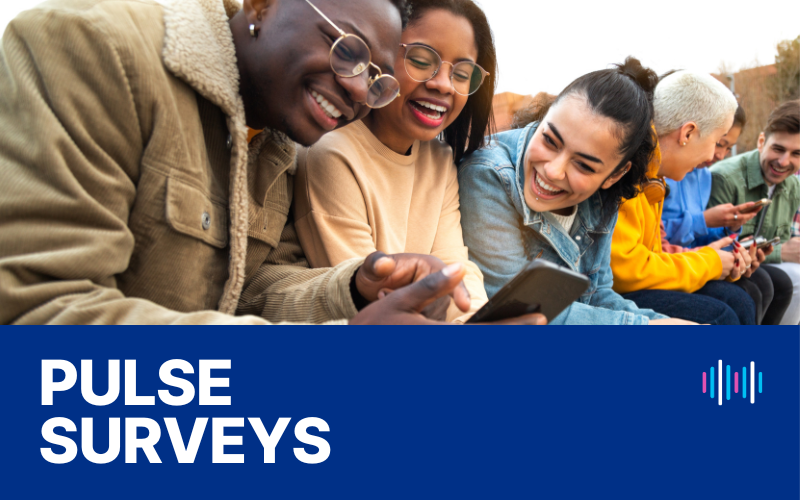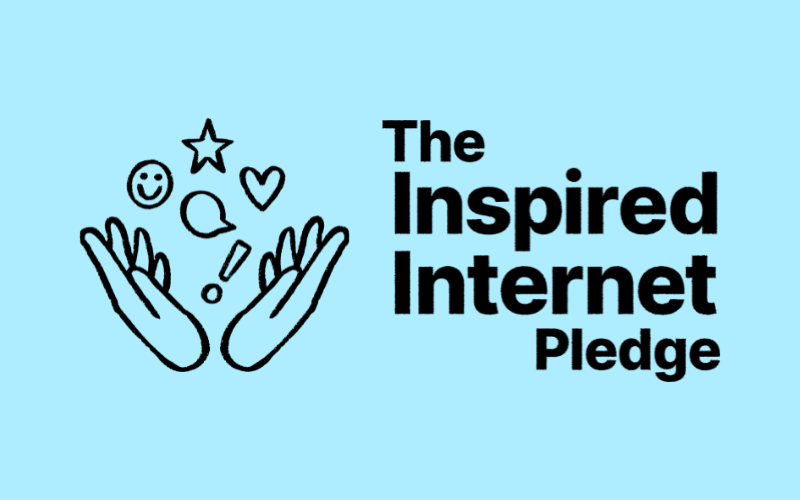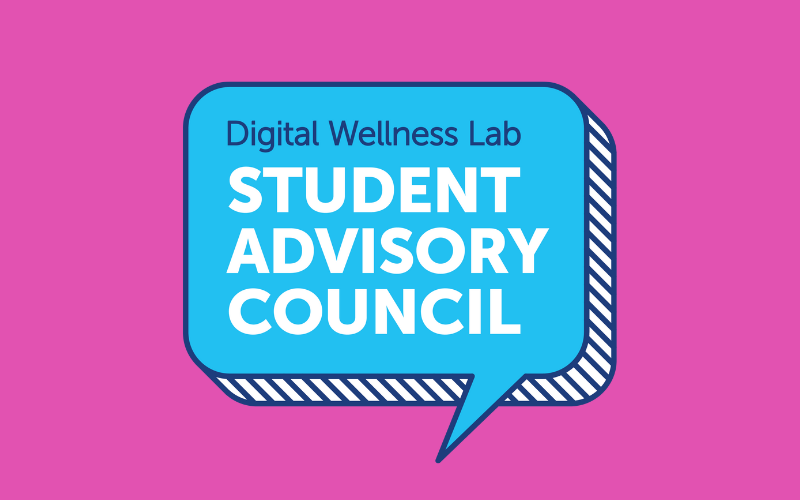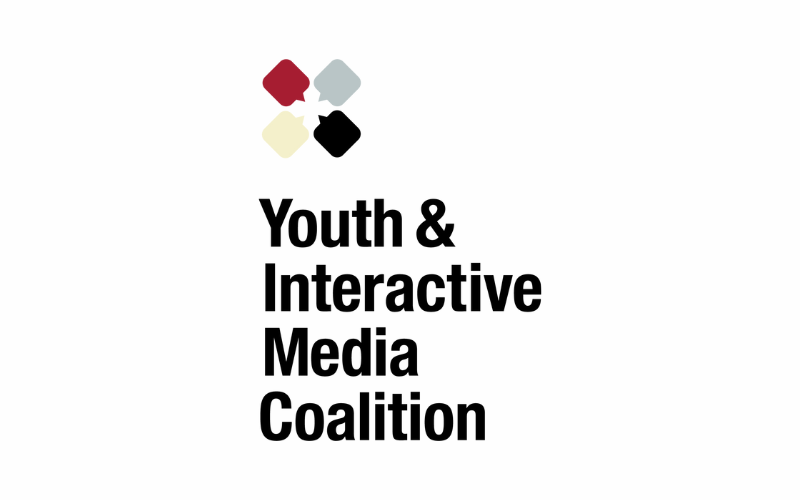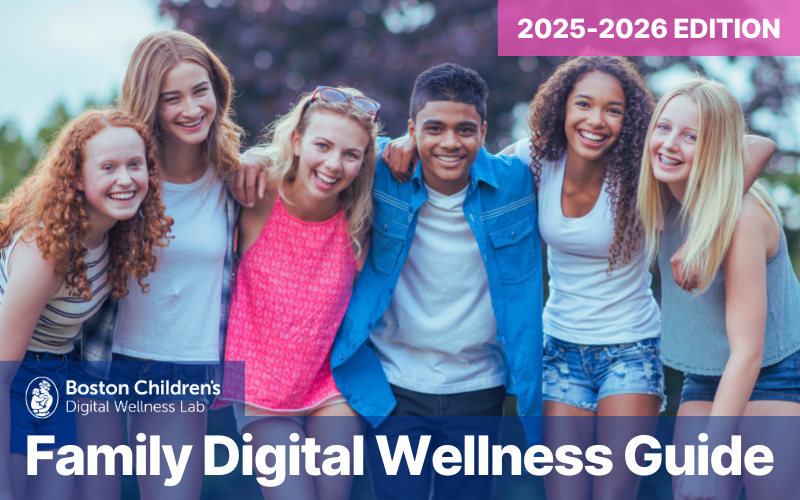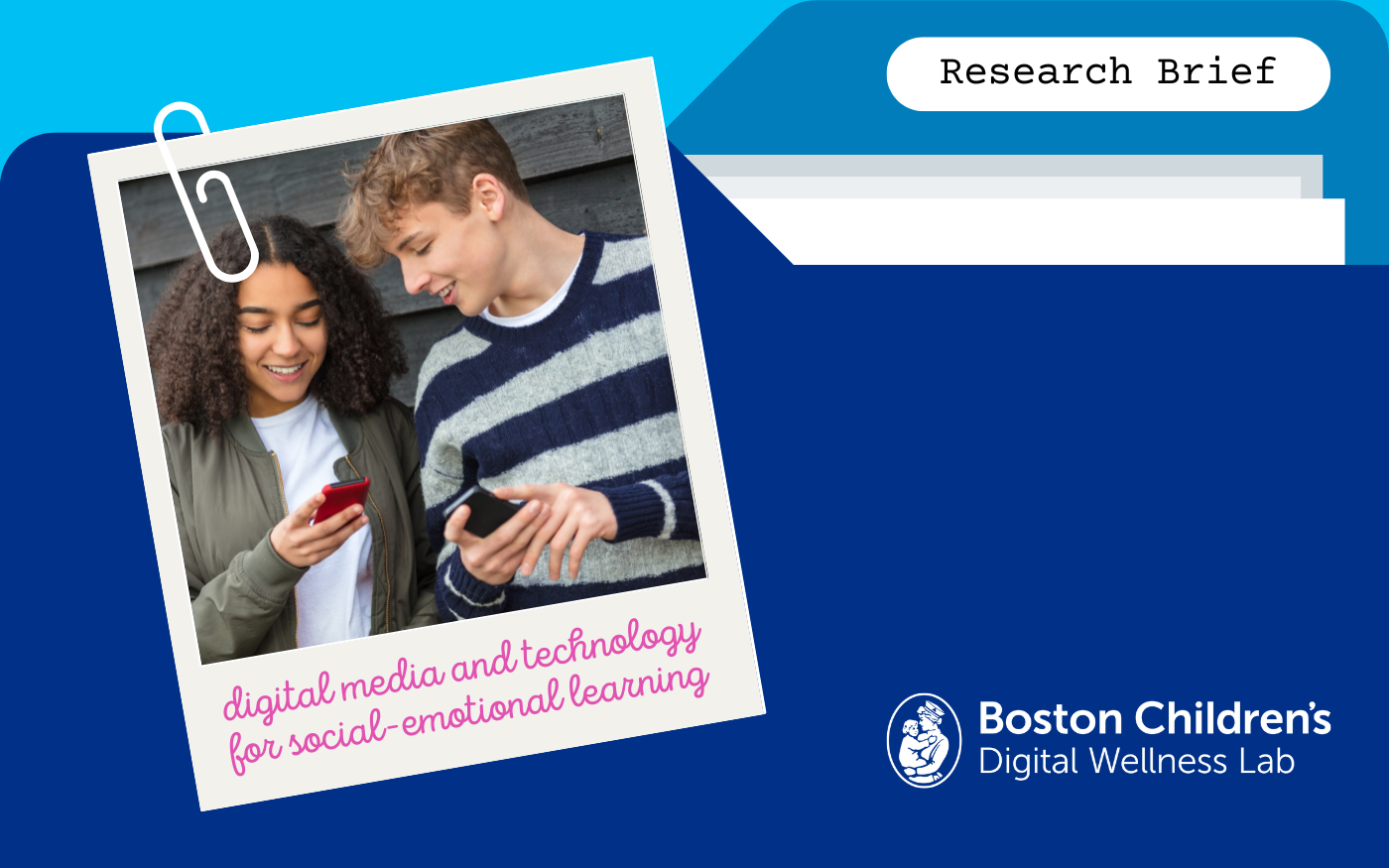Social-Emotional Learning (SEL) and its Impacts
Introduction
Social-emotional learning (SEL) – often referred to as life skills, 21st century skills, and non-cognitive skills – is defined by the Collaborative for Academic, Social, and Emotional Learning (CASEL) as “the process through which all young people and adults acquire and apply the knowledge, skills, and attitudes to develop healthy identities, manage emotions and achieve personal and collective goals, feel and show empathy for others, establish and maintain supportive relationships, and make responsible and caring decisions” (CASEL, n.d.).
A robust body of research highlights SEL’s positive impact on key developmental outcomes. Studies have demonstrated its benefits for children’s and teens’ academic achievement (e.g., Cipriano et al., 2023; Durlak et al., 2022), long-term college and career success (e.g., Taylor et al., 2017; Heckman et al., 2006), and mental and emotional wellbeing (e.g., Durlak et al., 2022; Clarke et al., 2021). SEL programs implemented in school settings have been shown to enhance students’ interpersonal relationships, academic performance, identity development, behavioral outcomes, and civic engagement (Grant et al., 2017). Given these well-documented benefits, educators and youth development organizations have spent decades working to integrate SEL effectively into students’ educational experiences (Yeager, 2017).
The Role of Technology and Media
Adolescence is a critical period for identity formation and social connectedness, both of which play a significant role in long-term wellbeing (Bandura, 2005). The competencies fostered through SEL—including empathy, self-awareness, and emotional regulation—are essential for building and maintaining supportive relationships (Yeager, 2017).
While adolescents spend approximately 6–8 hours per day in school, they also devote significant time to digital media. Research indicates that teens spend an average of four hours per day on smartphones (Radesky et al., 2023) and eight hours daily on screen-based entertainment, often engaging with multiple screens simultaneously (Rideout et al., 2022).
Social media usage is particularly prevalent: nearly two-thirds of U.S. teens report using TikTok (63%), Instagram (59%), and Snapchat (60%), while YouTube remains nearly ubiquitous among this demographic (93%) (Anderson et al., 2023).
Exploring SEL in Digital Spaces
This research brief examines how technological solutions have been used to deliver or enhance social-emotional learning (SEL) instruction, both in PK-12 classrooms and through entertainment media. We assess the effectiveness of these approaches and identify opportunities for further research on optimizing SEL delivery through technology and media. Additionally, we explore strategies for integrating SEL seamlessly into the spaces where children, adolescents, and young adults already engage.
SEL and Media Tools For Use in Formal Education
Media platforms and applications have been developed and adapted to facilitate the direct instruction of SEL concepts in classrooms, health centers, and homes. Additionally, media-based tools have been designed to support learners who require additional assistance in applying social-emotional skills, such as helping children with Autism Spectrum Disorder (ASD) develop communication abilities.
This section summarizes current research on media platforms, software, and instructional tools designed for the delivery of SEL in general education. It then explores a well-researched subtopic: SEL-focused educational tools and applications designed to support autistic students.
It is important to note that many of the tools discussed here have been developed within “Western” cultural contexts. As such, different cultural settings may have distinct expectations, needs, and norms that should be considered when designing SEL learning tools (e.g., Muravevskaia et al., 2023).
General Education SEL Media Tools, Platforms, and Applications
Early Childhood / Preschool (Ages Birth – 5)
For many children, early childhood education encompasses both informal learning at home and in childcare settings, as well as structured instruction in formal preschool environments. At this stage, teaching tools are often designed to introduce a broad range of SEL concepts rather than providing an in-depth exploration of a single topic.
A key feature of media designed for social-emotional development in early childhood is the use of storytelling as an instructional tool. Digital storytelling, in particular, allows for personalization and real-life contextualization, making SEL concepts more engaging and meaningful. For example:
- TogetherTales RPG, an augmented reality platform for preschoolers, helps children practice essential SEL skills such as emotion recognition, making friends, active listening, and problem-solving (Divanji et al., 2024).
- StoryFaces enables children to record their own emotional expressions, which are then integrated into a multimedia story, fostering self-awareness and emotional literacy (Ryokai et al., 2012).
Television has long served as a powerful tool for introducing and reinforcing SEL concepts in both formal and informal educational settings for young children. Unlike smaller-scale programs or applications, long-running television series offer the advantage of delivering targeted lessons on individual SEL competencies while maintaining a familiar narrative structure and characters.
A well-documented example is Sesame Street, which is deeply rooted in developmental, behavioral, and social science research (Fisch et al., 1999). Beyond its standard programming, Sesame Workshop has developed targeted curriculum-based initiatives, such as the General Resilience digital media toolkit. Implemented in preschool classrooms over a 12-week period, this toolkit led to measurable improvements in children’s emotional vocabulary, interpersonal attachment, initiative-taking, self-control, emotion regulation, and adaptability. It also resulted in reduced teacher-reported conflict, attention problems, and emotional regulation difficulties. Importantly, both teachers and students found the program engaging and beneficial (Oades-Sese et al., 2021).
Another widely recognized SEL-focused television program is Daniel Tiger’s Neighborhood, designed explicitly to support young children’s social and emotional development. Research indicates that watching the show enhances children’s social-emotional readiness for school, particularly when paired with active parental mediation (Rasmussen et al., 2016).
These examples highlight how television programming can serve as an effective and accessible medium for integrating SEL into early childhood education, fostering emotional literacy and interpersonal skills in young learners.
Middle Childhood (Ages 6-12)
As children enter middle childhood, they spend 7–9 hours daily in formal educational settings, providing greater opportunities to integrate targeted, media-based SEL tools.
Emerging technologies are increasingly being leveraged to support SEL development. One example is conversational agents (CAs) designed to enhance SEL competencies. In a recent study, the CA Superhero Zip was deployed with elementary-aged students for one week. Participants reported a greater understanding and increased practice of positive self-talk, though they also suggested improvements to better support focused attention (Fu et al., 2023).
Researchers in Finland explored a playful learning approach to examine how SEL competencies develop through interactions with a robot dog versus a real dog. The study assessed skills such as emotional understanding, empathy, relationship-building, teamwork, and responsible decision-making. Findings suggested that different SEL skills were emphasized depending on the interaction: while the real dog fostered empathetic responses, the robot dog encouraged discussions about human relationships, as children attributed it more human-like qualities (Heljakka et al., 2020).
Parents and caregivers often seek personalized SEL experiences for children. While many parents who did not report specific SEL concerns (e.g., emotion regulation) felt confident in supporting their child’s development, teachers were more receptive to technology-based interventions that connected caregivers, broader support networks, and children (Ryu et al., 2021). One such intervention, ZooU, an adaptive online social skills game, demonstrated significant improvements in social-emotional skills and behavior in a randomized controlled study. Parents reported gains in their children’s impulse control, emotion regulation, social initiation, and conflict resolution, with students receiving tailored feedback to support their individual skill development (Craig et al., 2016).
Differentiated learning not only meets individual needs but also encourages continued engagement. StoryFaces, previously discussed in early childhood applications, allows children to record their emotional expressions and incorporate them into stories. While younger children focused on happier expressions and shorter stories, older children used a wider range of emotions and more detailed narratives, increasing the likelihood of revisiting the program (Ryokai et al., 2012). Similarly, another storytelling application integrates visualizations of children’s emotion-based drawings into the narrative, further enhancing emotional literacy through creative expression (Schlauch et al., 2022).
Adolescence (Ages 13-19)
Adolescence is a critical period for identity formation, worldview development, and increasing independence, with peers playing a central role in social and emotional support (Simpson, 2018). As critical thinking skills are emphasized in educational settings, adolescents are capable of exploring more complex SEL competencies. However, despite some targeted interventions, there is limited evidence-based guidance for integrating SEL into school curricula at this developmental stage, highlighting a need for further research on its opportunities and benefits (Ford et al., 2024).
Given that most adolescents have smartphone access (Faverio & Sidoti, 2024), many SEL tools for this age group leverage mobile technology. One example is a gratitude intervention combining an app with an in-school curriculum, which led to increased gratitude and subjective wellbeing while reducing anxiety (Bono et al., 2023). This suggests that prosocial smartphone applications can effectively integrate SEL competencies into school settings, benefiting both social-emotional development and overall wellbeing.
Beyond individual use, smartphones can also support collaborative learning experiences. LINA (Lina Is Not Alone), an interactive program, fosters peer and teacher discussions on mental health through a mystery-driven storyline. Students work together to uncover the whereabouts of a fictional classmate, Lina, ultimately learning about the character’s struggles with mental health and family challenges (Mittman et al., 2022). While its single-use storyline limits long-term engagement, LINA demonstrates how augmented reality and digital storytelling can engage young adolescents in difficult yet meaningful conversations, reinforcing the positive impact of digital connections (Mittman et al., 2022).
Entertainment Media and SEL Skill Development
While media platforms and applications not explicitly designed for SEL may still offer benefits for social-emotional learning, concerns exist regarding the potential displacement of in-person opportunities for emotional and social development. This section reviews research on the effects of entertainment media (media not created specifically for formal education settings) on social-emotional learning across developmental stages.
Early Childhood / Preschool (Ages Birth – 5)
Research indicates that most children are introduced to digital media well before preschool. By 24 months, children in the United States are exposed to an average of 58 minutes of screen time daily, increasing to 2.5 hours for children aged two to four (Rideout & Robb, 2020). The American Academy of Pediatrics recommends limiting screen time for very young children to video chatting with family and friends, which can foster social-emotional skills such as conversational turn-taking and attachment (Council on Communications and Media et al., 2016). However, the benefits conferred by digital engagement are less impactful than those provided by in-person connection experiences (Glick et al., 2022).
Very young children often struggle to apply what they learn from screen media to real-world situations, a phenomenon known as the “transfer deficit” (Barr, 2013). However, older preschoolers can benefit from television and streaming content that highlights prosocial behaviors, such as characters demonstrating empathy or offering social support, even when these shows are not explicitly designed to build social-emotional skills. It is important to note that children’s modeling of observed behaviors can work both positively and negatively. When shows depict high levels of relational aggression (e.g., fighting or bullying), young viewers may imitate those behaviors (Ostrov et al., 2006). Furthermore, incorporating screens into multiple daily routines—such as dressing, meals, and naptime (more than five instances per day)—may increase the risk of social-emotional delay (Raman et al., 2017).
Smart speakers, such as Amazon Alexa, are a newer technology increasingly used by young children. In 2023, 88% of children ages 3-5 had access to smart speakers, frequently using them to listen to music or ask questions (Bickham et al., 2024). Programs built into Alexa, known as “skills,” aim to support competencies such as active listening, emotional wellbeing, and politeness. However, these programs generally offer limited feedback and engagement. Parents reported mixed feelings about smart speakers and SEL, with some expressing concern that these devices may promote behaviors misaligned with their values (Fu et al., 2022). As SEL becomes a politicized topic (Anderson, 2022), some parents unfamiliar with its principles may be hesitant to allow their children to engage with prosocial, emotionally focused content.
A broad body of research explores the relationship between media exposure in early childhood and SEL development, though results are mixed. In China, one study found a positive association between media exposure and social-emotional delays in preschool children, though the content consumed was not analyzed in depth (Gou & Perceval, 2023). Another study that differentiated media types found that time spent on video game consoles was most associated with SEL delays, regardless of socioeconomic status (Gou & Yang, 2024). Conversely, a review of seven studies reported inconsistent associations between digital devices like smartphones and SEL outcomes, suggesting that factors such as content quality and parental stress levels may influence outcomes (von Wyl et al., 2022). Additionally, while touchscreens can support problem-solving skills, prolonged use may interfere with learning that occurs through in-person interactions (Atkins et al., 2024). Overall, children with excessive screen time may exhibit weaker social-emotional skills, though the underlying mechanisms likely include factors such as parental influence and media content.
Parental media use also influences young children’s development. When parents use mobile devices frequently around their children, it can lead to reduced exploration and weaker reconnection during reunions (Myruski et al., 2018). Stressed parents may also overuse media and technology with their young children, contributing to delays in toddlers’ social-emotional development (Choi & Hong, 2025). These findings highlight the importance of considering the entire media environment, including parental use, when evaluating the impact on children’s social-emotional skills.
Middle Childhood (Ages 6-12)
During middle childhood, children develop greater independence, form stronger peer relationships, and enhance complex problem-solving skills (school-age children development, n.d.). Aligned with these developmental shifts, their media preferences change—streaming remains popular, but video games take on a more prominent role.
Contrary to negative media portrayals, video games can support SEL in various settings (Harrison, 2023). Even games that are not inherently prosocial, such as Fortnite, may encourage prosocial behavior by rewarding in-game cooperation with teammates (Shoshani & Krauskopf, 2021). Social gameplay requirements can promote SEL by allowing children to interact with peers and solve problems collaboratively. However, these platforms can be a double-edged sword. Many games include “live chat” features, where disagreements and interpersonal aggression are common. While moderation is necessary to prevent harm, overly strict moderation may hinder conflict resolution and limit social learning (Slovak et al., 2018). Involving young people in designing these systems can promote user ownership and create more youth-centric social spaces (Tekinbas et al., 2021).
Social robots, another emerging technology, are designed to communicate with children and often mimic human-like qualities (movement, expressive faces, etc.). These robots can create targeted learning opportunities and provide emotional support, but their effectiveness may be limited in home settings. Factors such as lack of novelty or interruptions in use, like vacations, can reduce their impact (Cagiltay et al., 2022). While promising in educational environments, their everyday utility for children’s learning remains limited.
Although children become more independent and engage with interactive media during this stage, adult guidance remains essential. Integrating co-play opportunities into games and applications can strengthen caregiver-child relationships and support collaborative learning. Abel and Grace (2020) propose a framework encouraging designers to treat the caregiver-child relationship as a dyadic user, fostering shared experiences that promote both technology skills and social-emotional growth.
Adolescence (Ages 13-19)
By adolescence, online connectivity and engagement are nearly ubiquitous, with 95% of US teens reporting that they have access to a smartphone and about half reporting that they are constantly online (Faverio & Sidoti, 2024). Online peer interactions can support the critical developmental tasks of adolescence (e.g., identity formation, independence from family) by encouraging belonging and self-disclosure (Davis, 2012). Social media’s broad appeal has provided a wide landscape of communication opportunity, where young people can interact across a variety of platforms and media formats with people ranging from their “real life” friends to celebrities and influencers.
Understanding teens’ social-emotional development experiences can help to support the design of technologies which promote wellbeing (Davis et al., 2019). Social inclusion can be a meaningful positive experience for adolescents in social online spaces, who may feel a sense of belonging, increase their access to and practice of self care and social support strategies (Charmaraman & Delcourt, 2021), and build a more independent sense of identity (Haddock et al., 2022) in social media spaces.
Video gaming has been found to support young people’s development of agency and self-exploration (Haddock et al., 2022). A majority of teens who play video games have engaged in multi-player gaming, which boys tend to rate as competitive and girls tend to experience as more cooperative (Yue et al., 2024). While the mechanisms that drive these differences are unclear, it may be due to gendered game preferences, with girls preferring cooperative or less action-oriented games than boys. There is an opportunity for continued research to explore how games popular with teen boys, in particular, may be designed in ways which increase opportunities for positive cooperation and prosocial behavior, rather than relying on a hyper-competitive model.
Television and online video viewing are often solitary activities, but they can also connect young people with shared interests and deliver storylines that promote social-emotional learning. A study of popular Turkish television shows for adolescents found that while some storylines encouraged self-confidence, leadership, patience, respect, self-control, and empathy, they also depicted negative behaviors such as lying and revenge (Ustundag & Dogan, 2021).
Autism-Focused Tools, Platforms, and Applications for SEL
Children with autism1 often experience challenges with social communication, emotion regulation, and emotion recognition (American Psychiatric Association, 2013). As a result, technology is increasingly used to support social-emotional learning for youth with autism spectrum disorder (ASD).
A review of social robots designed to support autistic children’s social-emotional development found that these tools can help build skills such as imitation, turn-taking, joint attention, emotion recognition, and conversation (Kewalramani et al., 2024). However, most studies occurred in clinical settings and were short-term, emphasizing the need for more school-based and longitudinal research (Kewalramani et al., 2024).
Chatbots and augmented reality (AR) have also been used to deliver social stories to children with ASD. One chatbot promotes SEL by suggesting coping strategies, such as breathing exercises, in response to negative emotional cues (Gagan et al., 2022, 2023). EMooly, an AR platform powered by generative AI, helps children with ASD understand emotions and recognize facial expressions while encouraging parental co-use. Research on EMooly showed notable improvements in emotion recognition and received positive feedback from children on the technology’s innovative features (Lyu et al., 2024).
Although these technologies are designed for children with ASD, inclusive classrooms—where students with and without disabilities learn together—benefit all students (Sobel et al., 2024). Tools like Incloodle can further support inclusion in these environments (Sobel et al., 2024). Additionally, some autistic individuals feel that traditional SEL visual teaching tools do not fully capture their experiences of emotional expression or communication (Zolyomi & Snyder, 2021). To ensure interventions are universally accessible, designers should seek input from neurodivergent users.
SEL and Digital Citizenship
Digital citizenship has become an increasingly relevant application of SEL in formal education, especially for adolescents. Core SEL skills like social awareness and decision-making are essential for developing media literacy and responsible digital behavior (Cortesi et al., 2020). Research highlights the overlap between these skill sets, emphasizing their role in fostering mindfulness, ethical development, and sound decision-making (Rautela et al., 2022; Stonebanks & Shariff, 2024).
Integrated SEL-digital citizenship programs show promise in reducing cyberbullying and promoting positive bystander intervention (Stonebanks & Shariff, 2024). While these skills are particularly important for adolescents, who are frequent users of digital tools, introducing them earlier helps establish a foundation that can adapt to evolving digital environments (for a multi-grade curriculum example, see Common Sense Media, 2020).
Conclusion
There is a growing interest in using technology to support social-emotional learning (SEL) and critical media literacy, but current platforms and applications are often designed for use in educational settings, limiting their potential for broader impact. While technology could help bridge the home-school gap by reinforcing SEL skills at home (Slovak et al., 2016), research on how social-emotional skills contribute to critical media literacy at different developmental stages remains limited (Tsortanidou et al., 2022). Additionally, although commercial games and platforms can foster prosociality and social-emotional development, little research explores how intentional design choices could better support SEL for children and adolescents. Future research should engage stakeholders to effectively integrate SEL into the digital environments where young people are already active.
Regulation also plays a critical role in safeguarding young people online, but overly broad solutions, such as blanket bans or restrictions, may do more harm than good. These approaches assume that restricting technology can “fix” mental health challenges, overlooking the complex ecological factors at play, which may simply become more visible on social media (Angel & boyd, 2024). Instead, regulation should aim to protect youth while supporting their positive development in digital spaces.
This research brief was written by Kaitlin Tiches, MLIS, Medical Librarian and Knowledge Manager at the Digital Wellness Lab, with contributions from the Education Development Center team. The brief was commissioned by the Ruderman Family Foundation. For more information, please email us.
- Here, we are following the conventions set forth by the neurodivergent community that they prefer to use person-first (e.g., child with autism) and identity-first (e.g., autistic child) language interchangeably. ↩︎

